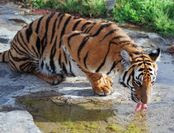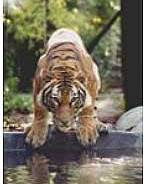Swedlik pg 395
Some highly specialized Q-sorts include the Leadership Q-Test (Cassel,1958 as cited in Swedlik et al) and the Tyler Vocational Classification System (Tyler, 1961 as cited in Swedlik et al)
Aamodt
Pg 438
Personal Characteristics Associated with Leadership
In the last 100 years, many attempts have been made to identify the personal characteristics associated with leader emergence and leader performance.
Leader Emergence
Leader emergence is the idea that people who become leaders possess traits or characteristic different from people who do not become leaders. That is, people who become leaders, such as Barrack H. Obama and CEOs Carly Fiorina and Michael Dell, share traits that your neighbor or a food preparer at McDonald’s does not. If we use your school as an example, we would predict that the students in your student government would be different from students who do not participate in leadership activities. In fact, research indicates that to some extent, people are “born’ with a desire to lead or not lead, as somewhere between 17% (Ilies, Gerhardt,&Le, 2004 as cited in Aamodt) and 30% (Arvey, Rotundo, Johnson, Zhang,&McGue,2006 as cited in Aamodt) of leader emergence has a genetic basis (Ilies et al.,2004 as cited in Aamodt)
Does that mean that there is a “leadership gene” that influences leader emergence? Probably not. Instead we inherit certain traits and abilities that might influence our decision to seek leadership. Though early reviews of the literature suggested that the relationship between traits and leader emergence is not very strong, as shown in Table 12.1, more recenr reviews suggest that
1. People high in openness, conscientiousness, and extraversion, and low in neuroticism are more likely to emergence as leaders than their counterparts (Judge, Bono, Ilies & Gerhardtm2002 as cited in Aamodt 2010).
2. High self-monitors (people who adapt their behavior to the social situation) emerge as leaders more often than low self-monitors (Dayb & Schleicher, 2006; Day,Schleicher,Unckless, & Hiller, 2002 as cited in Aamodt 2010)
3. More intelligent people are more likely to emerge as leaders than are less intelligent people (Judge, Colbert, & Ilies, 2004 as cited in Aamodt 2010)
4. Looking at patterns of abilities and personality traits is more useful than looking at individual abilities and traits (Foti & Hauenstein, 2007 as cited in aamodt 2010)
Table 12.1 Summary of Meta-Analysis od Leader Emergence and Performance…pg 440_Aamodt
It is especially perplexing that some of the early reviews concluded that specific trait are seldom related to leader emergence because both anecdotal evidence and research suggest that leadership behavior has some stability (Law,1996 as cited in Aamodt 2010) To illustrate this point, think of a friend you consider to be a leader. In allprobability, that person is ;eader in many situations. That is, he might influence a group of friends about what movie to see, make decision about what time everyone should meet for dinner, and “take charge” when playing sports
Conversely, you probably have a friend who has never assumed a leadership role in his life. Thus, it appears that some people consistently emerge as leaders in a variety of situations, whereas others never emerge as leaders.
Perhaps one explaianation for the lack of agreement on a list of traits consistently related to leader emergence is that the motivation to mlead is more complex than originally thought. In a study using a large international sample, Chan and Drasgow (2001) as cited in Aamodt found that the motivation to lead has three aspects (factors):
Affective identity, noncalculative, and social-normative. Peole with an affective identity motivation become leaders because they enjoy being in charge and leading others. Of the three leadership motivation factors, people scoring high on this one tend to have the most leadership experience and are rated by others as having high leadership potential. Those with a noncalculative motivation seek leadership position when they perceive that such positions will result in personal gain.
For example, becoming a leader may result in an increase in status or in pay. People with a social-normative motivation become leaders out of a sense of duty. For example, a member of the Kiwanis Club might agree to be the next president because it is “his turn”, or a faculty member might agree to chair a committee out of a sense of commitment to the university
Individuals with high leadership motivation tend to obtain leadership experience and have confidence in their leadership skills (Chan & Drasgow, 2001 as cited in Aamodt 2010). Therefor after researching the extent to which leadership is consistent across life, it makes sense that Bruce (1997) as cited in Aamodt (2010) concluded that the best way to select a chief executive officer (CEO) is ti look for leadership qualities (e.g., risk taking,innovation, vision) and success early in person’s career. As support for his proposition, Bruce cites the following examples:
1. Harry Gray, the former chair and CEO of United Technologies, demonstrated vision, risk taking, and innovation as early as the second job in his career.
2. Ray Tower, former president of FMC Corporation, went way beyond his job description as a salesperson in his first job to create a novel sales training program. Tower continued to push his idea despite upper management’s initial lack of interest.
3. Lee Iacocca, known for his heroics at Ford and Chrysler, pioneered the concept of new car financing. His idea of purchasing a 1956 Ford for monthly payments of $56 (“Buy a ’56 for $56”) moved his sales division from last in the country to first. What is most interesting abaout this success is that Iacocca didn’t even have the authority to implement his plan-but he did it anyway.
The role of gender in leader emergence is complex. Meta-analysis indicate that men and women emerge as leaders equally often in leaderless group discussions (Benjamin, 1996 as cited in aamodt 2010), men emerge as leaders more often in short-term groups and group carrying out tasks with low social interaction (Eagly & Karau, 1991 as cited in Aamodt 2010), andwomen emerge as leaders more often in groups involving high social interaction (Eagly & Karau, 1991 as cited in Aamodt 2010).
أَلَمْ تَرَ أَنَّ اللَّهَ يُسَبِّحُ لَهُ مَنْ فِي السَّمَاوَاتِ وَالأرْضِ وَالطَّيْرُ صَافَّاتٍ كُلٌّ قَدْ عَلِمَ صَلاتَهُ وَتَسْبِيحَهُ وَاللَّهُ عَلِيمٌ بِمَا يَفْعَلُونَ Tidakkah kamu tahu bahwasanya Allah: kepada-Nya bertasbih apa yang di langit dan di bumi dan (juga) burung dengan mengembangkan sayapnya. Masing-masing telah mengetahui (cara) solat dan tasbihnya, dan Allah Amat Mengetahui apa yang mereka kerjakan. an-Nur:41
Tazkirah
Sami Yusuf_try not to cry
mu'allim Muhammad Rasulullah Sallallahu alaihi waSalam
ummi_mak_mother_ibu_Sami Yusuf
zikir Tok Guru Nik Abdul Aziz Nik Mat Mu'allimul Mursyidi
syeikh masyari afasi
ruang rindu
song
Arisu Rozah
Usia 40

Mudah mudahan diluaskan rezeki anugerah Allah
usia 40 tahun

UPM

Kuatan Pahe Darul Makmur
pemakaian serban semsa menunaikan solat_InsyaAllah ada sawaaban anugerah Allah
Rempuh halangan

Abah_menyokong kuat oengajian Ijazah UPM

usia 39 tahun

usia 23 tahun_UPM
An_Namiru

Ijazah Pengurusan Hutan UPM

General Lumber_Nik Mahmud Nik Hasan

Chengal

Tauliah

Semasa tugas dgn general lumber

PALAPES UPM

UPM

Rumah yang lawa

Muhammad_Abdullah CD
semasa bermukim di Kuatan Pahe Darul Makmur
Ijazah

air terjun

Borneo land

GREEN PEACE
GREEN PEACE
Kelang

Ahlul Bayti_ Sayid Alawi Al Maliki

Asadu_ Tenang serta Berani

atTiflatul Falasthiniin

Sayid Muhammad Ahlul Bayt keturunan Rasulullah

AnNamiru_SAFARI_Kembara

AnNamiru_resting

Hamas

sabaha anNamiru fil nahri

Namir sedang membersih

Tok Guru Mualimul_Mursyid

An_Namiru
.jpg)
Namir_istirehat
.jpg)
SaaRa AnNamiru fil_Midan
.jpg)
Renungan Sang Harimau_Sabaha AnNamiru
.jpg)
Syaraba AnNamiru Ma_A
.jpg)
AnNamiru_Riadhah
.jpg)
AnNamiru_Riadhah
.jpg)
AnNimru ma_A waladuha
Namir fil_Ghabi (sebut Robi...
Namir

AdDubbu_Beruang di hutan

Amu Syahidan Wa La Tuba lil_A'duwwi

AsSyahid

Namir

Tangkas
najwa dan irah

sungai

najwa

najwa

Kaabatul musyarrafah

unta

Jabal Rahmah

masjid nabawi

masjid quba

dr.eg

najwa dan hadhirah

along[macho]
![along[macho]](https://blogger.googleusercontent.com/img/b/R29vZ2xl/AVvXsEjuMi7D33CmR0_KXrCW2XigfLcUuQurcvtqOS139ncCwEzCyB-jUopk7QK7anADIenJEm2S0N6gAY1ubnACYXewgiAsI3rBjnLTawM39alLL-rEopOoVqn0w5WpLhPJH3hrXNtchEhgtyaI/s240/P7150023.JPG)
harissa dan hadhirah

adik beradik
Tongkat Ali

Tongkat Ali
herba kacip Fatimah

herba Kacip Fatimah
hempedu beruang

hempedu beruang
hempedu bumi

hempedu bumi
herba misai kucing

herba misai kucing
herba tongkat Ali
.png)
Tongkat Ali
Ulama'

Ulama'
kapal terbang milik kerajaan negara ini yang dipakai pemimpin negara

kapal terbang
Adakah Insan ini Syahid

Syahid
Tok Ayah Haji Ismail

Saifuddin bersama Zakaria

Dinner....
Sukacita Kedatangan Tetamu
Pengikut
Kalimah Yang Baik

Ubi Jaga

Ubi Jaga
Arkib Blog
Burung Lang Rajawali

Chinese Sparrowhawk
Kelicap Mayang Kelapa

Brown-Throated Sunbird
Kopiah

Pokok Damar Minyak

Kacip Fatimah

Mengkudu Akar



